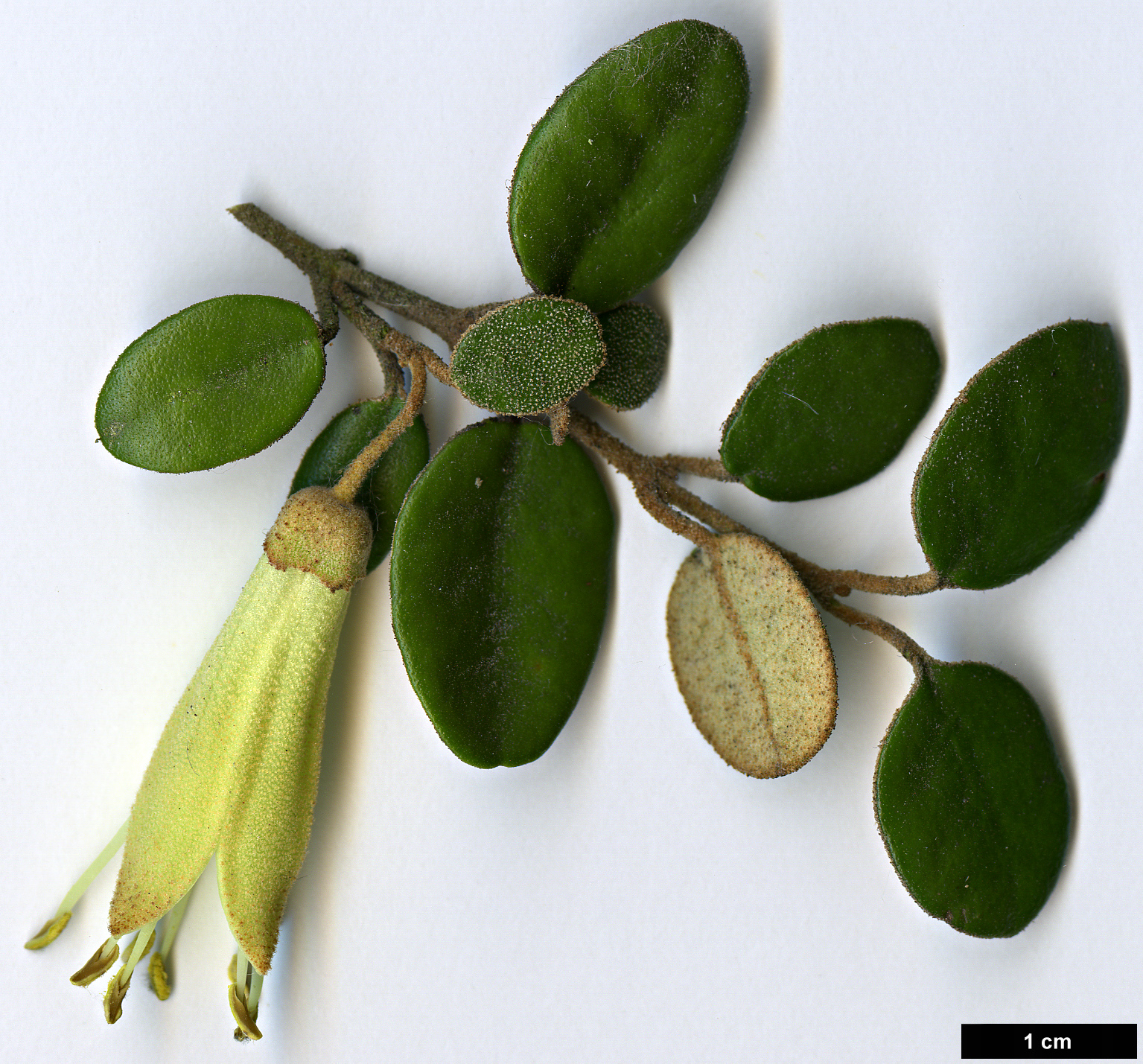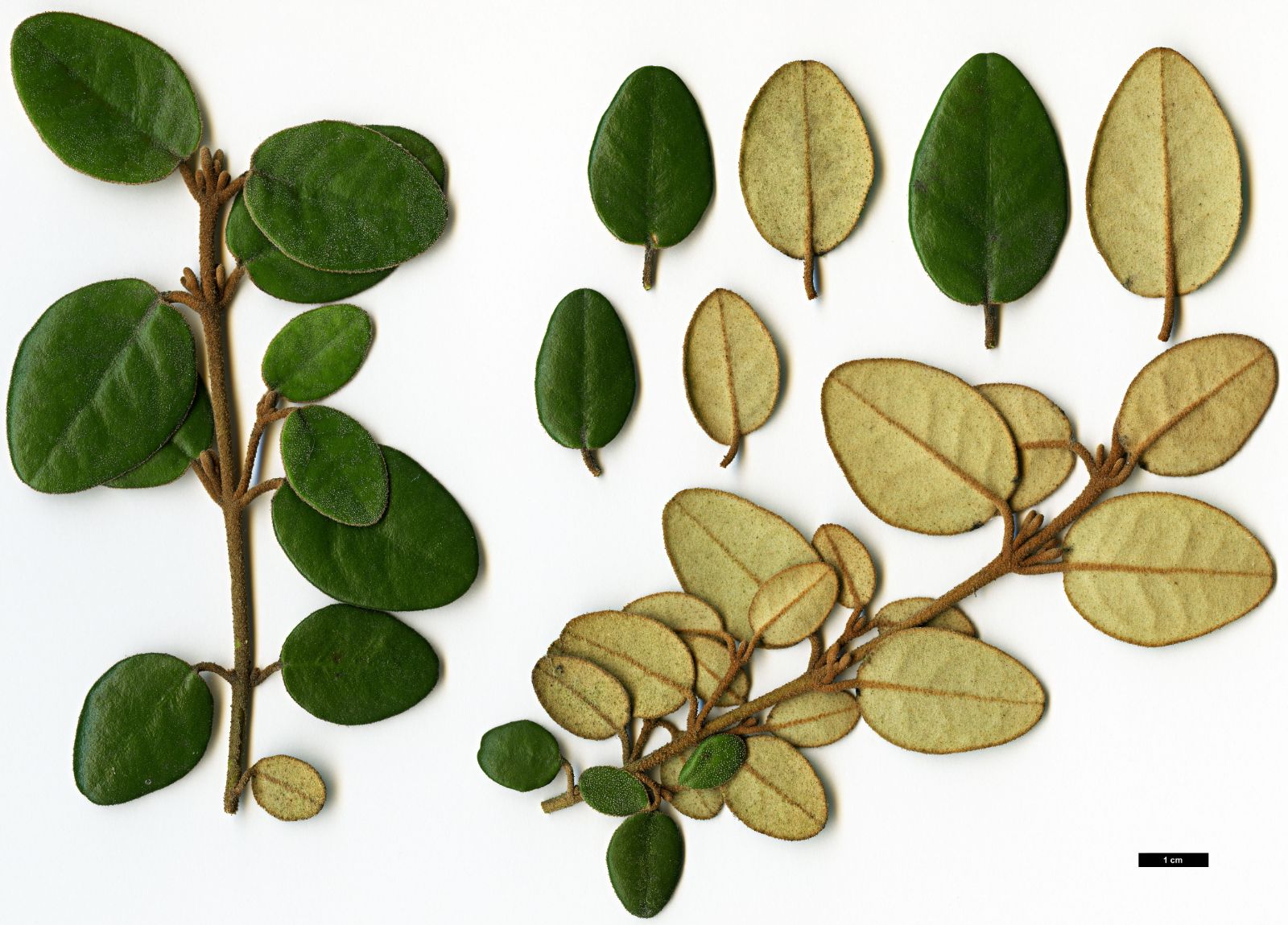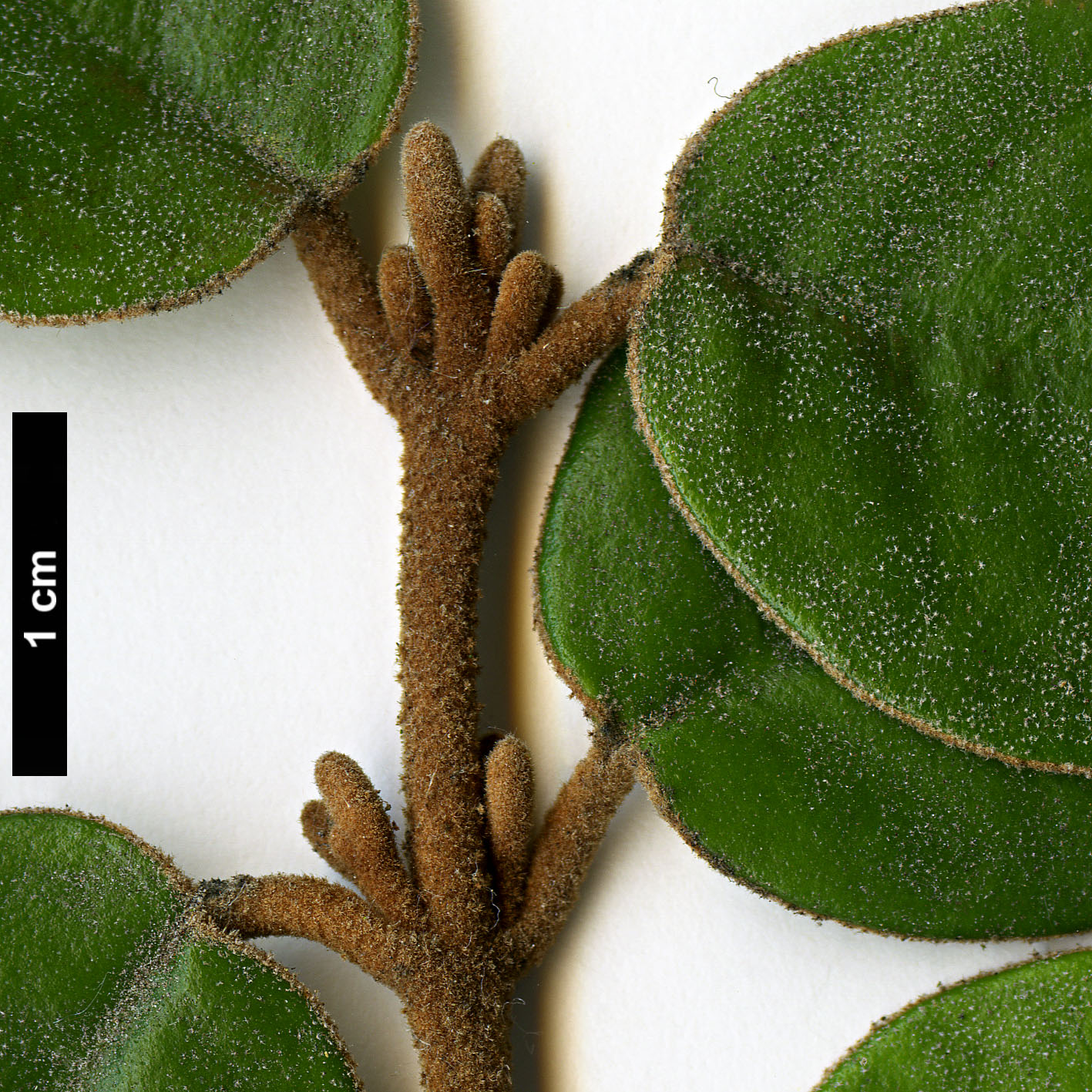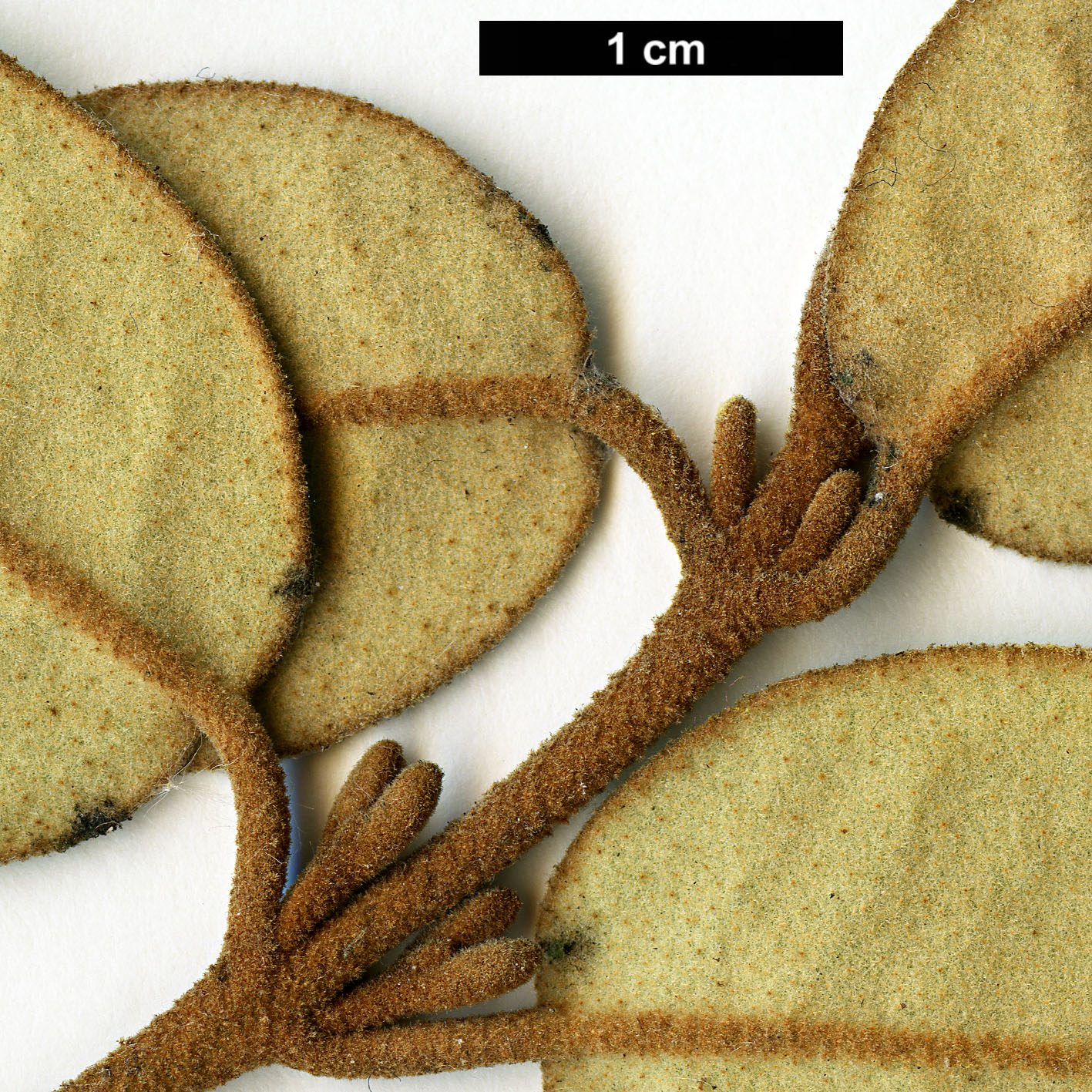Correa backhouseana
Credits
Article from Bean's Trees and Shrubs Hardy in the British Isles
Recommended citation
'Correa backhouseana' from the website Trees and Shrubs Online (treesandshrubsonline.
Genus
Editorial Note
The correct spelling of this species is Correa backhouseana. The alternative spelling C. backhousiana is still regularly encountered, and was used by Bean up to and including the eighth edition. We have amended the spelling here ahead of a full revision when sponsorship is received. TC, July 2022.
A densely branched shrub, attaining a height of 15 ft in the wild state, less in cultivation; branchlets greyish brown, slender, clad when young with stellate hairs. Leaves opposite, ovate-elliptic, rounded or blunt at the apex, rounded or slightly cordate at the base, 3⁄5 to 12⁄5 in. long, margin entire, very dark green above, densely clad below with rust-coloured down; leaf-stalks 1⁄5 to 1⁄3 in. long. Flowers solitary or in few-flowered cymes, more or less pendulous; calyx cup-shaped, with the rim level all round or with four very shallow teeth; petals greenish yellow, rather thick, united into a funnel-shaped corolla about 1 in. long, with acute lobes; stamens eight, protruding beyond the mouth of the corolla; the four stamens inserted opposite the lobes have the filaments widened in the lower half, while in the other four they are of almost equal width throughout their length. Bot. Mag., n.s., t. 289.
Native of Tasmania on the north and west coasts. It thrives very well at Tresco Abbey in the Isles of Scilly, where it is used as a hedging-plant, and has also been grown in other mild gardens, usually as “C. speciosa” or “C. virens”. It is closely allied to C. reflexa (speciosa) but the densely downy undersides of the leaves distinguish it.





